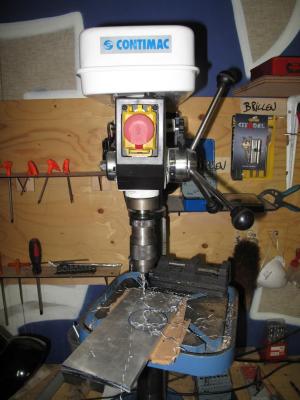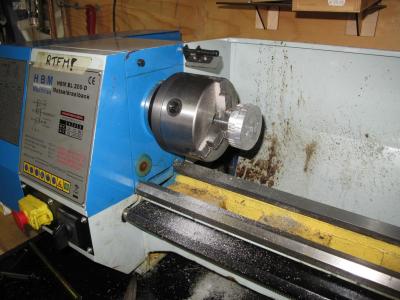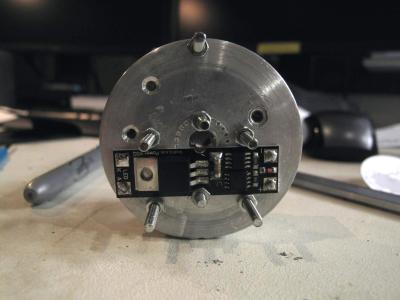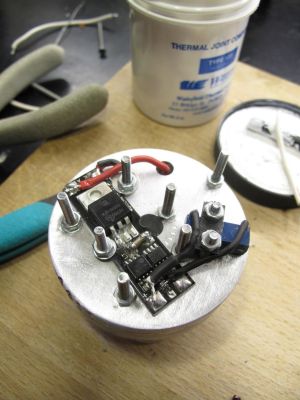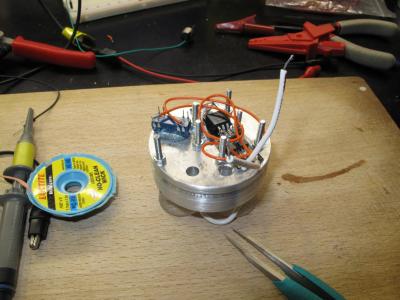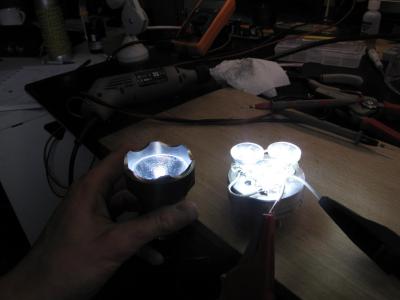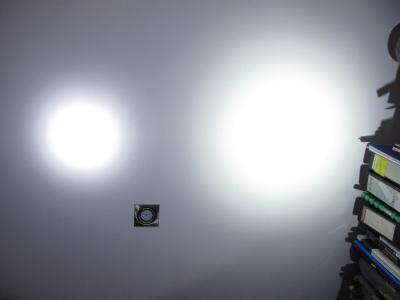About two years ago I bought a Hartenberger “Maxi Compact” dive light for about €60.
As this was a 10 year old dive light with a halogen bulb and a well-used battery pack I think that was a fair price. Anyway, the plan was to use the housing for a modded LED light.
At first I just made a second battery pack, the first one was just (not) enough for one dive with the original bulb, so I needed a second one and charge one pack while diving with the other. Also bought a Graupner “Ultramat 14 Plus” battery charger as this was an affordable charger that can be used for a variety of different chemistries, but best of all, it has a port that allows for cell balancing. As I was using a 6S NiMH battery pack, that was a feature I wanted to have.
A couple of weeks ago I started making the LED module with driver, heatsink and connections to the battery pack. The original idea was to hack into the driver circuit that delivers the PWM to the original bulb as I could use the original on/off/dim switch at the back of the light, but I didn’t get there yet…
So. Starting with the heatsink. I couldn’t find a 62mm aluminium rod that I could use to turn the heat sink from (inner diameter from the housing), but I did find a scrap 5mm plate. Decided to try with two layers of that.
First drilled out a circle with a drill press, trying to keep it as round as possible.
Drilled a hole in the middle to allow a 8mm bolt (started with 5mm but clearly wasn’t strong enough for the coming abuse) to put the piece in the chuck of the lathe and two extra holes for 4mm bolts to make sure the two parts wouldn’t rotate but stay together nicely .
With the piece in place fired up the lathe and started grinding the rough parts with a metal file. When the piece was round enough -about 1.5 hours later- started off with the lathe, turning off really small pieces at a time. Never thought using a lathe was so much fun. I’ll come up with other ideas just to use the lathe again.
Ended up with this, rather happy with it:
Designed a drawing in Autocad for the driver, led modules, optics and wire holes and drilled them. Countersunk the bolts where necessary.
Rough positioning to check if everything fits.
With only a limited time before leaving on a dive trip I bought the driver circuit from Led-Tech as they could get me the parts quick enough. I wanted the warm CREE’s as their colour reproduction is better: CRI for CREE XM-L cool white is 65, CRI for neutral white is 75. There’s also a special warm white XM-L with a CRI of 90. Obviously hat would be the one to go for.
As I didn’t manage to hack into the PWM driving circuit (which had a feedback loop that relied on the halogen bulb and didn’t play nice with the constant current driver circuit), I just added a reed switch that I found in my parts bin. No holes that can cause leaks under water, just a magnet outside the housing to switch the light on/off.
Comparison with a 1000 lumen dive light:
And finally:
After about twenty dives with the light I realised that 3 XM-L’s at more than 1000 mAh would be overkill. Also, the optics that I used now are to wide. Nice in clear water, but as soon as there’s a bit of sediment there’s too much reflection. I might keep these optics on one of the XM-L’s, and give the other two a narrower beam. I’d need some kind of control to choose between the two and also a dimming circuit but that’s for later.
Really happy with the power consumption. Where I couldn’t do a single dive without the light getting dimmer at the end of the dive when using the halogen, I can now easily do 3 long dives without charging.
I’ll have to work on the connectors as well. Cramming an 7-pin connection on the battery packs, a connection between the front and the back (where the switch is), a connection between battery pack and the driver while keeping it all easy to open up for charging will take some thinking.
So far, I’m happy with what I have right now and *really* loved the lathe.
